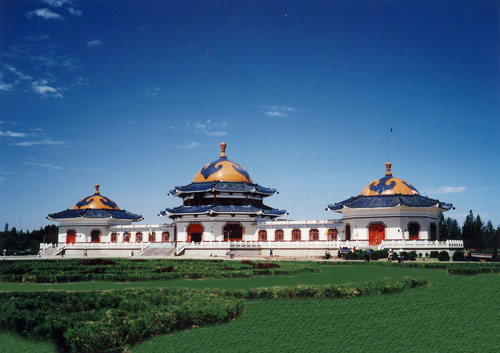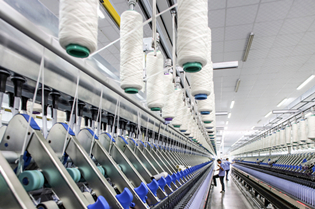Genghis Khan's Mausoleum
 |
|
Genghis Khan's Mausoleum lies 30 kilometers south of Ejin Horo Qi, and 185 kilometers from Baotou, the capital of North China's Inner Mongolian Autonomous Region. |
 |
|
The mausoleum, established in 1956, covers an area of 55,000 square meters. |
Genghis Khan's Mausoleum lies 30 kilometers south of Ejin Horo Qi, and 185 kilometers from Baotou, the capital of North China's Inner Mongolian Autonomous Region.
The mausoleum, established in 1956, covers an area of 55,000 square meters. It is one of the historical sites under top state protection in China, and the holiest place in the eyes of the Mongolian people. The mausoleum is made up of four magnificent palaces in the shape of Mongolian yurts. They are the Main Palace, the East Palace, the West Palace and the Back Palace respectively. Corridors link the four palaces together. With rounded roofs and glazed tiles inlayed with golden eaves, they are ornate and imposing.
The 26-meter-high Main Palace, with a huge sculpture of Genghis Khan inside, is the right place for ceremonial rituals to worship Genghis Khan. The Back Palace contains Genghis Khan's tomb, which is covered by yellow satin. The East Palace is home to Genghis Khan's wife and his fourth son Tuolei. The West Palace is used as an exhibition hall, displaying relics of the emperor, such as spear, sword, and saddle.
Where's the real tomb?
Researchers contend that only the clothing of Genghis Khan, instead of his body, is buried in the tomb in Ejin Horo Banner. It's said to be a set rule that the burial places of Mongolian rulers should be kept secret. To this day, no one knows exactly where Genghis Khan was buried.



 Print
Print Mail
Mail





